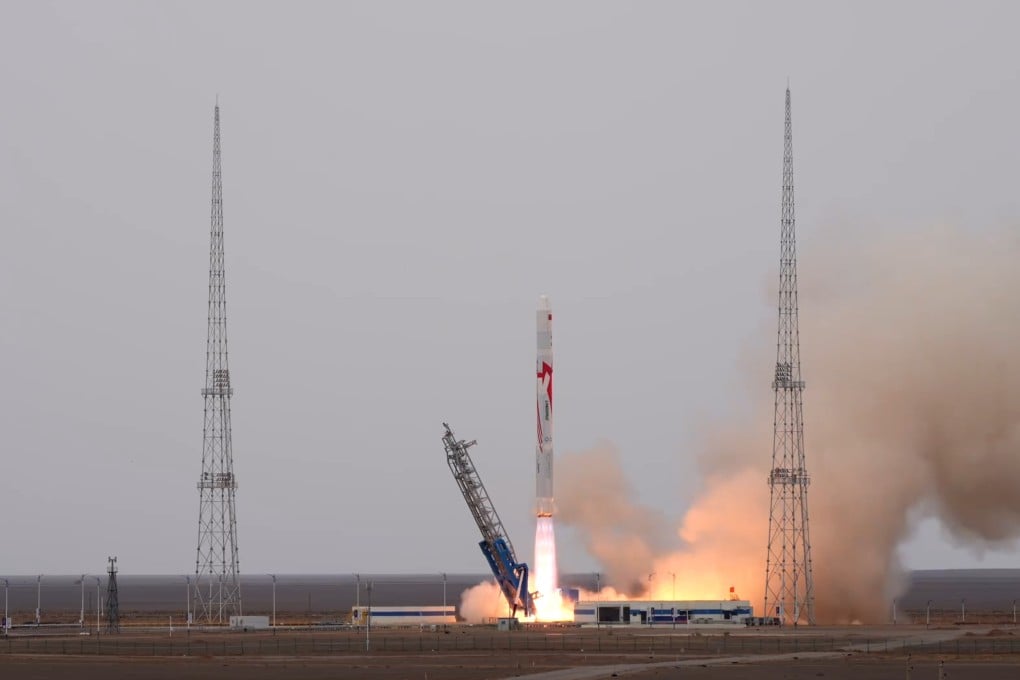China beats SpaceX with world’s first methane-powered rocket launch
- Chinese scientists are celebrating after the projectile blasted off successfully from the Gobi desert at 9am on Wednesday
- The Zhuque-2 launch puts private aerospace company LandSpace in front for the race to liquid oxygen methane rocket technology

A private Chinese aerospace company has won the race to launch a giant rocket powered by methane and liquid oxygen.
The rocket successfully delivered a test payload into sun-synchronous orbit (SSO), the first in the world to make such an achievement.
Earlier this year, two other liquid oxygen methane rockets – the Terran 1 from Relativity Space in the US and SpaceX’s Starship – failed in their maiden attempts to reach orbit.
This morning’s lift-off marks the second attempt for the Zhuque-2, after an unsuccessful launch on December 14.
Methane-powered engines – with their high performance and low operational costs – are particularly suited for the developing trend of reusable rockets. The technology is regarded as the front-running design in the new era of rocketry.